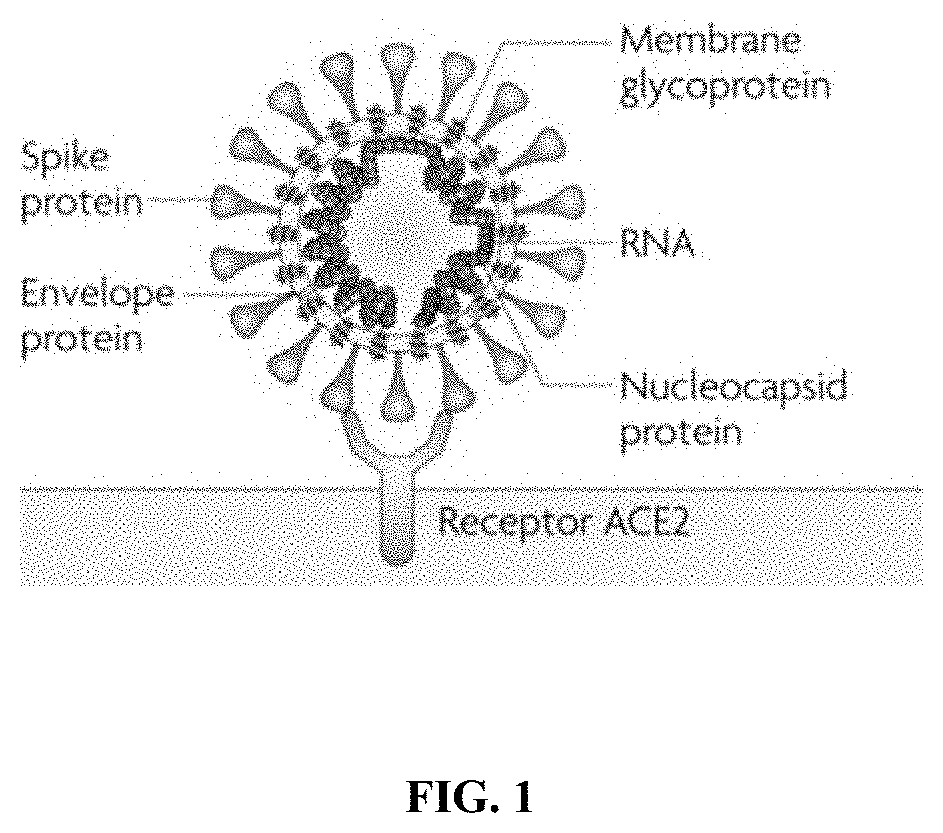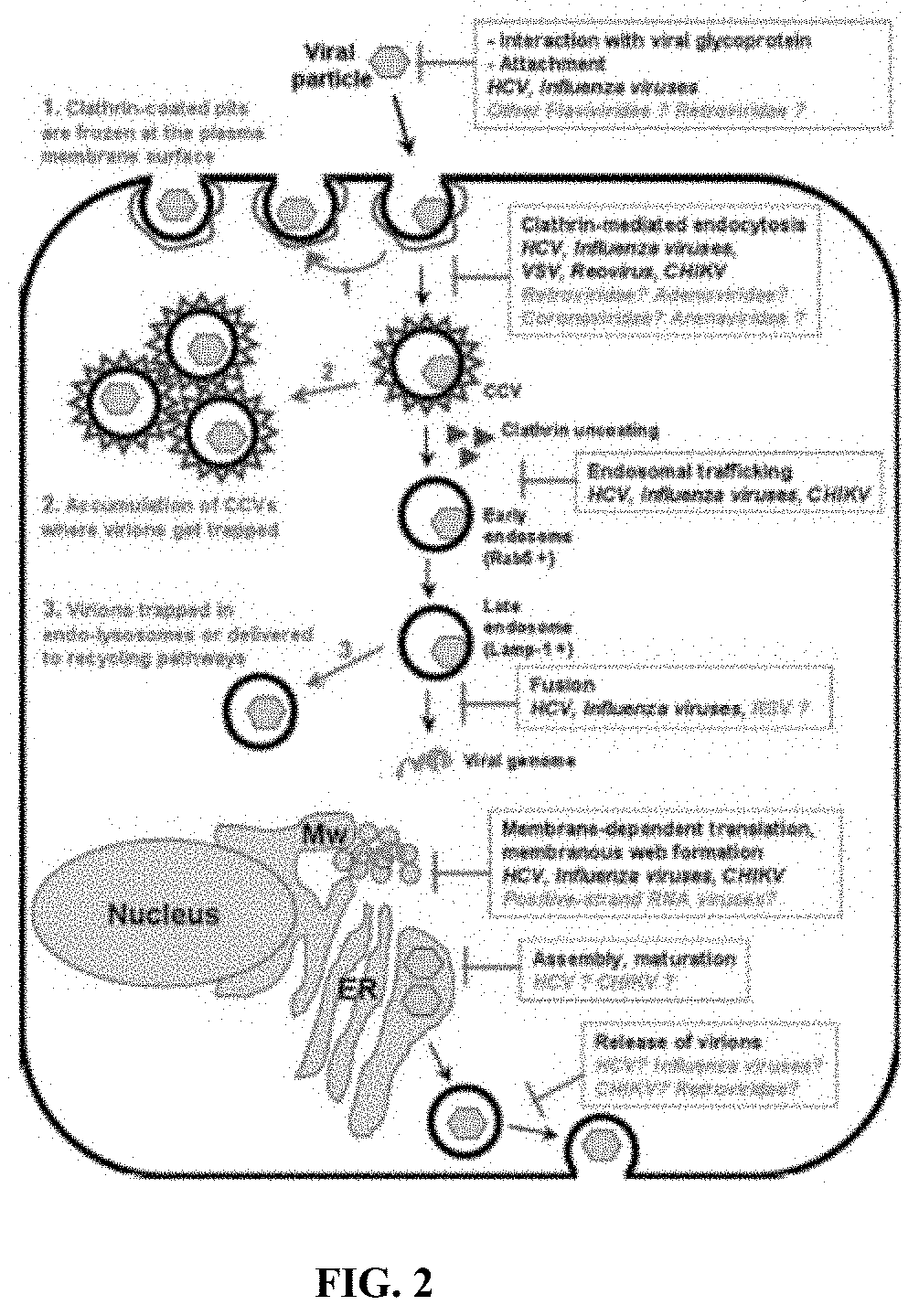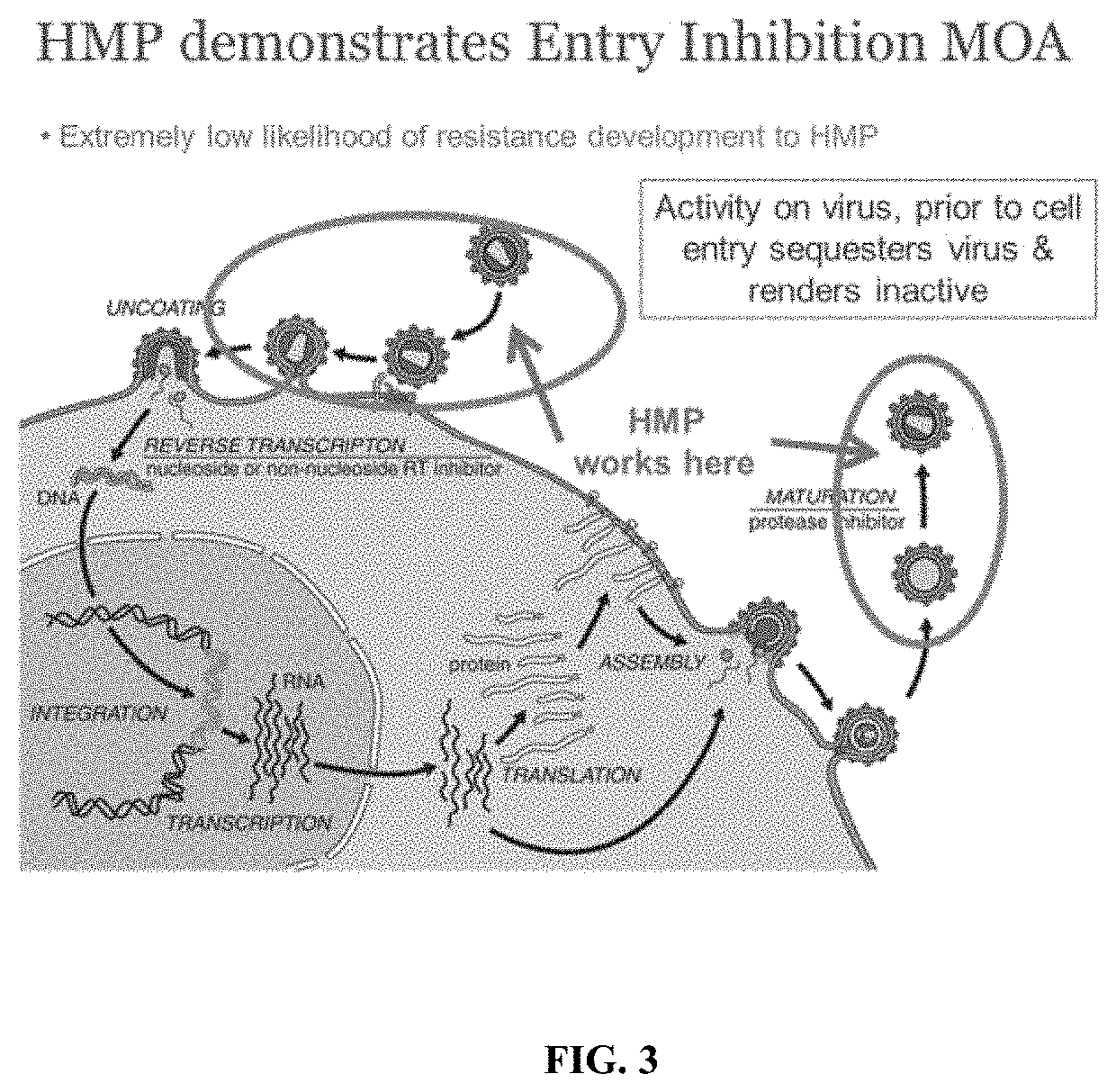Methods and compositions for inhibiting influenza viruses using low molecular weight hydrophobically modified polymers and polyalkylene glycols
a technology of hydrophobic modification and composition, which is applied in the field of polyalkylene glycol compounds, can solve the problems of increasing the likelihood of inhibitory success, not generally effective against other enveloped viruses, and decreasing so as to reduce the likelihood of resistance, inhibit the transmission of viruses, and increase the chance of inhibitory success
- Summary
- Abstract
- Description
- Claims
- Application Information
AI Technical Summary
Benefits of technology
Problems solved by technology
Method used
Image
Examples
example 1
[0086]Inventive examples E1-E6 and Comparative Examples C1-C2: Preparation of Compositions to be Tested
[0087]The compositions of E1-E6, D1 and C1-C2 were prepared according to the descriptions set forth below with materials in the amounts listed in Table 1. Compositions E1-E6, D1 and C1-C2 are in accordance with the compositions and methods of this invention. Compositions C1-C2 are comparative compositions.
TABLE 1IngredientD1E2E1E3E4E5E6INCI namew / w %w / w %w / w %w / w %w / w %w / w %w / w %C1C2Potassium Acrylates0.09—0.0090.090.9CopolymerPEG200—0.5PEG6000—0.50.50.50.5Cocamidopropyl——BetainePEG100,000 (Polyox0.5WSR-N-10 PEG-2M)PEG200,000 Polyox0.5WSR-N-80 PEG-5M)PEG2,000,000 Polyox0.5WSR-N-60k PEG-45M)Sodium laureth Sulfate——PEG 80 Sorbitan——Laurate*expressed in % w / w activesEach of the compositions of Table 1 was independently prepared as follows:D1- 0.3 g of Potassium Acrylates Copolymer (Activity 30%) was mixed with 99.7 g of deionized water with slight heating at 65 C. and the pH adjusted ...
example 3
[0088]Activity of Embodiments against Influenza
[0089]Following the protocol described above, embodiments E1-E6, D1 and C1-C2 were tested against Influenza A / PR / 8 / 34 (Table 3).
TABLE 3Influenza A / PR / 8 / 34Influenza A / PR / 8 / 34EmbodimentEC50 (μg / ml)TC50 (μg / ml)D1>150071.1E12256>2500E21605>2500E32009>2500E4811>2500E5970>2500E62167>2500C1>2500>2500C2>2500>2500Note:all EC50 and TC50 concentrations for E1-E6, C1-C2 are the concentration of the PEG in the sample. D1 shows the concentration of the potassium acrylates copolymer (activity 30%) in the sample.
PUM
| Property | Measurement | Unit |
|---|---|---|
| molecular weight | aaaaa | aaaaa |
| molecular weight | aaaaa | aaaaa |
| molecular weight | aaaaa | aaaaa |
Abstract
Description
Claims
Application Information
 Login to View More
Login to View More - R&D
- Intellectual Property
- Life Sciences
- Materials
- Tech Scout
- Unparalleled Data Quality
- Higher Quality Content
- 60% Fewer Hallucinations
Browse by: Latest US Patents, China's latest patents, Technical Efficacy Thesaurus, Application Domain, Technology Topic, Popular Technical Reports.
© 2025 PatSnap. All rights reserved.Legal|Privacy policy|Modern Slavery Act Transparency Statement|Sitemap|About US| Contact US: help@patsnap.com



